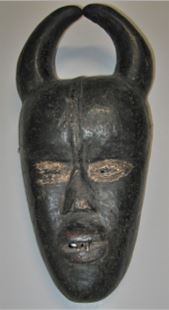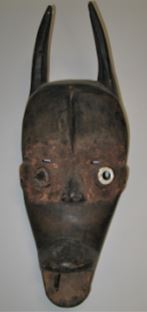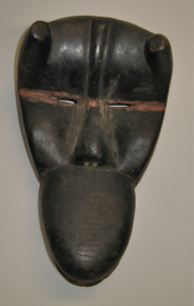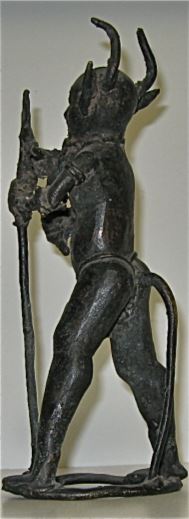
Media screen troubleshooter: color changes with media screen breakpoints. Disable in global CSS.

Let’s talk about my first endosym.
During my first tour to West Africa, I began collecting African art. The masks and statues intrigued me, and over the years I acquired an extensive collection. I donated the bulk of my collection to a museum, but I still have a number of pieces.
Many masks of West Africa show a human face with horns. They are called devil masks.



As I traveled through the interior of Liberia I would always look for masks. Most of my acquisitions were from art dealers that traveled throughout the area moving from one country to another. Because my purchases were in the interior, and not in the big cities, I acquired some nice pieces for a reasonable cost.
About midway through my first tour in Liberia, one of the dealers was showing me some masks when I spotted an unusual statue. It was bronze, formed by the lost wax casting method. Only ten inches tall, it was a representation of a man with two horns sprouting from its large, balding head. The ears were long and pointed. The face looked Egyptian, sporting the artificial beard like those worn by the pharaohs. A loincloth covered the genitals. From the backside a long tail reached the ground.


The detail of the statue was quite surprising. Around the neck was some kind of necklace. Around the upper arms were double bands. Similar bands adorned the forearms. Around the wrists were spiked guards. The right hand held a battleaxe. In the left hand was a spear. The statue was the figure of a warrior that was humanoid with horns and a tail.

Clearly this was not the normal African art that I had been buying. It was not carved for the tourist trade and the fact that the stature showed much more detail than similar art objects made this an important find.
I asked the dealer where he acquired it. He claimed that he had purchased it from a man living near the Saint Paul River. The man claimed that he had found it in a cave next to some old ruins. Whether this story was true or not is impossible to prove.
I do know that the Saint Paul River runs through parts of Liberia that are unexplored. There are stories about places along the river where no one ventures. The local tribes believe that bush demons inhabit those areas. Go on Google Earth and follow the Saint Paul River into the interior and you will find areas where no villages exist.
At the time I acquired the statue, it was just an unusual piece of art. In later years, when I showed the statue to people the reaction was always the same—they had never seen anything like it.
When we were living in Kansas, a woman who claimed that she could touch an object and know where the object came from told us that it was very old, from Egypt and one of five similar statures. Another person was afraid to touch the statue.
So the statue became the endosym of the series. I created the word, endosym from the definition of endosymbiosis, the concept of two beings living in a symbiotic relationship. The endosym is a man and the demon living in one body.
During my second tour, I acquired a small bronze face mask pendant made by the Ashanti Tribe of Ghana, that was very similar to the statue. I find it hard to believe that the similarity is only a coincidence.
Perhaps the creature that I call an endosym is more real than any of us know or understand.